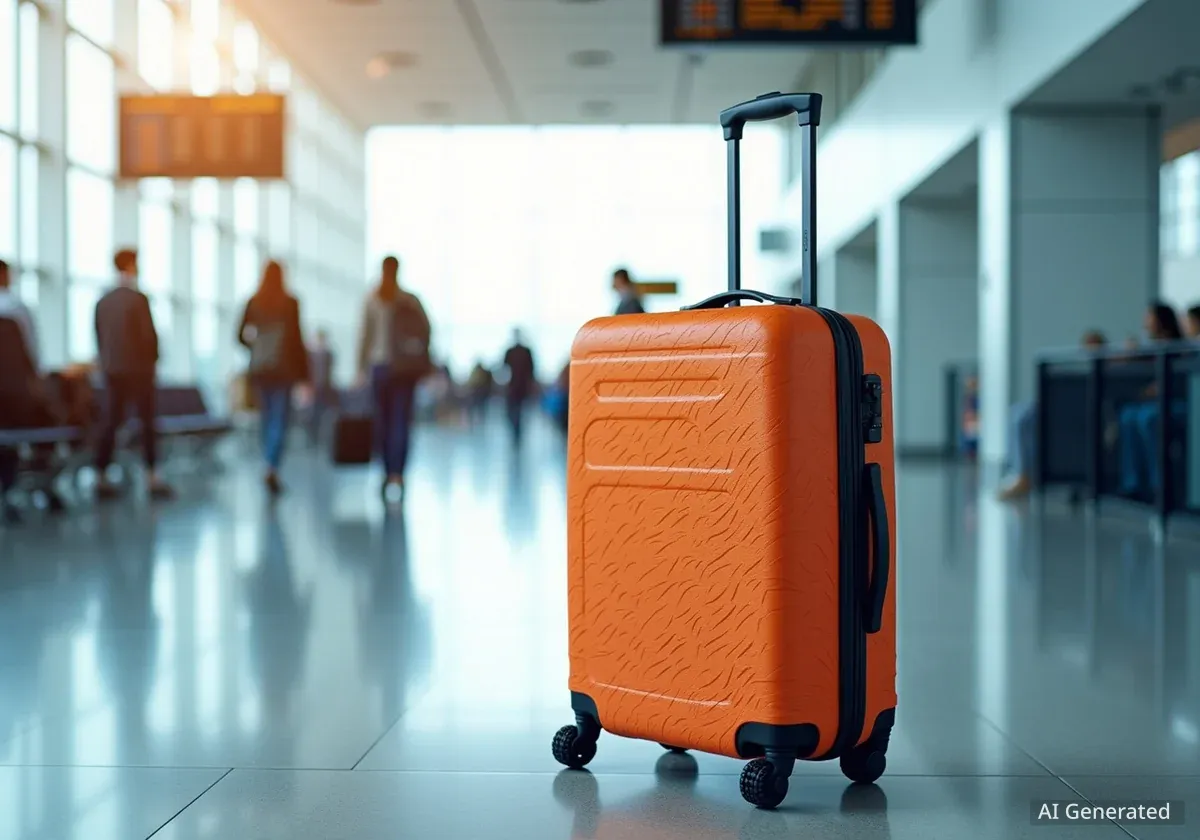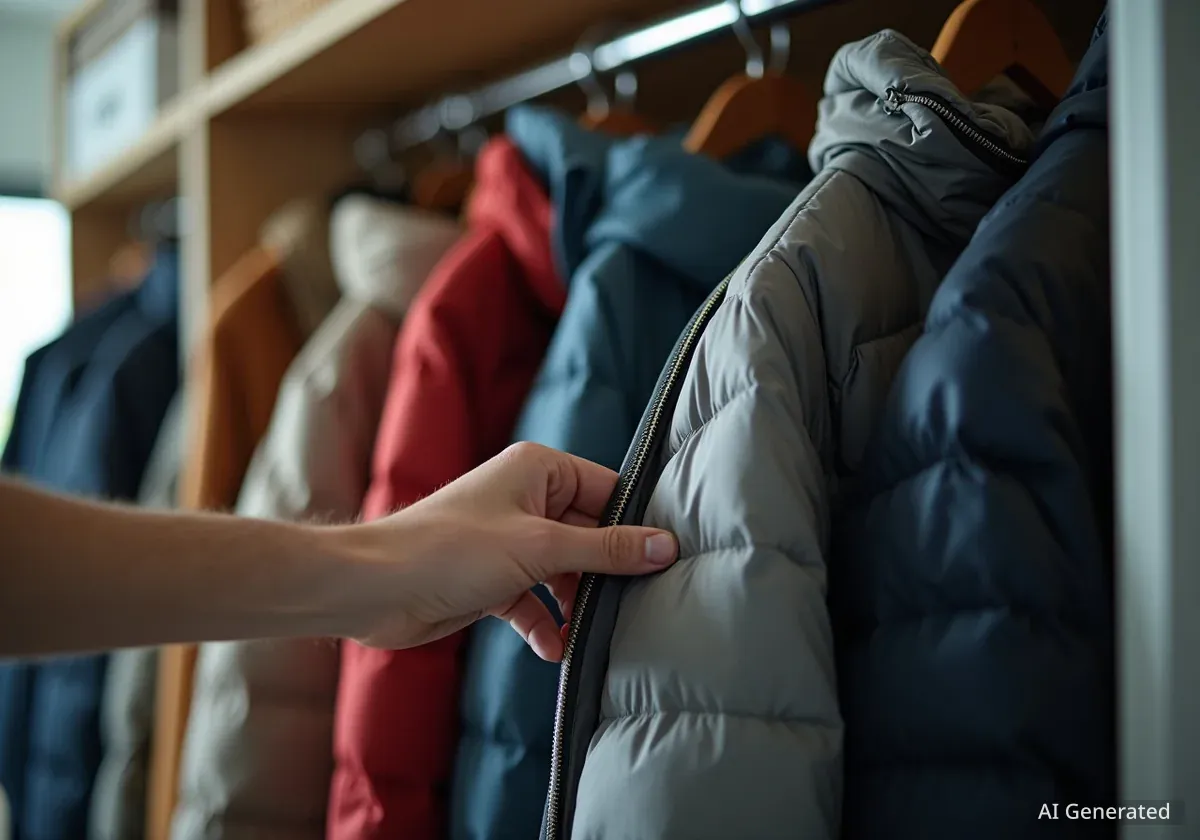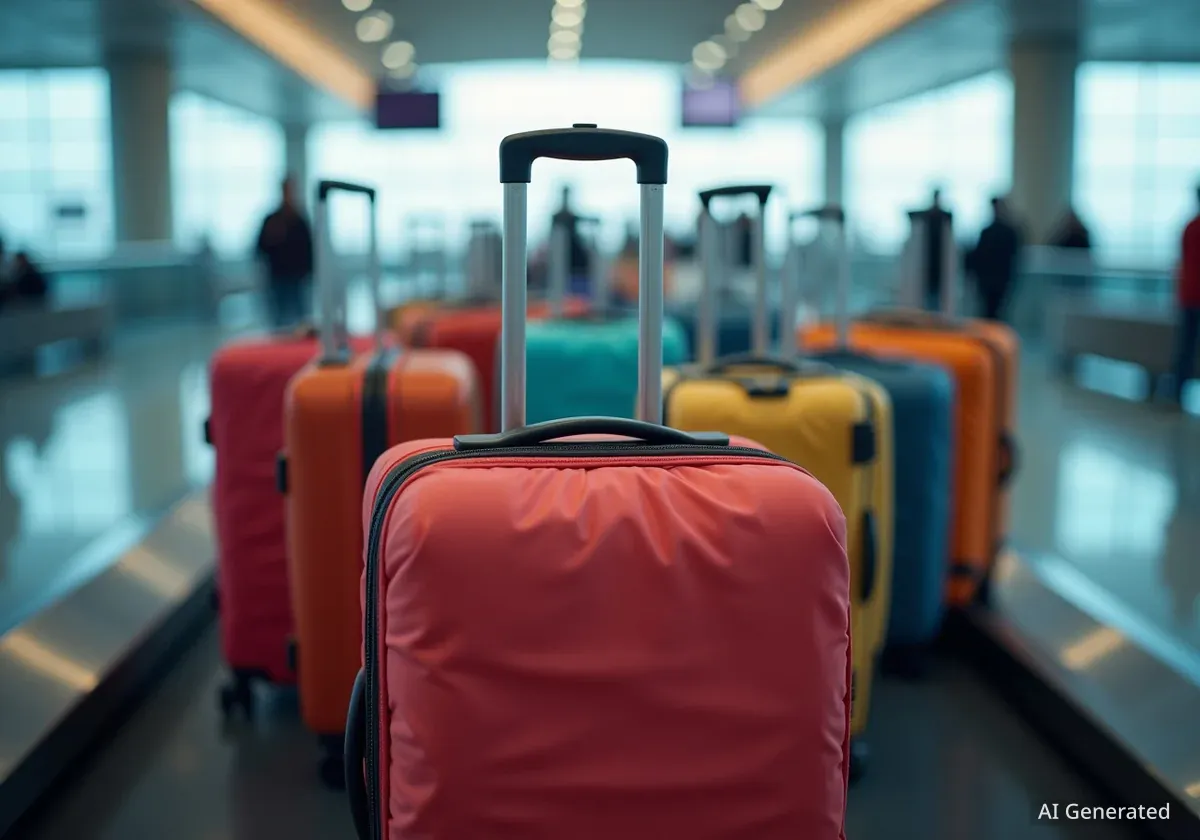Travelers are increasingly turning to luggage covers to protect their suitcases from damage and to make them easier to identify at baggage claim. These accessories, typically made from durable, stretchable fabrics, offer a simple solution to common travel issues like scratches, scuffs, and dust accumulation during transit and storage.
As air travel rebounds, the market for travel accessories has expanded. Luggage covers represent a practical and affordable investment for protecting more expensive hard-shell or fabric suitcases, extending their lifespan and maintaining their appearance. Understanding the materials, features, and sizing is key to selecting an effective cover.
Key Takeaways
- Luggage covers protect suitcases from scratches, dust, and general wear and tear encountered during travel.
- Most covers are made from a stretchy polyester blend, which offers durability, flexibility, and is often machine washable.
- Proper sizing is essential for a secure fit; consumers should measure their luggage height (excluding wheels) and width (excluding handles).
- Key features include cutouts for handles and zippers for easy installation and removal.
The Purpose of a Modern Luggage Cover
The primary function of a luggage cover is to act as a protective barrier for a suitcase. During handling by airport staff, baggage systems, and in transit, luggage is susceptible to significant cosmetic damage. A cover absorbs the impact of scuffs, scratches, and dirt.
Beyond protection, these covers serve a crucial role in identification. In a sea of similar-looking black or grey suitcases on a baggage carousel, a brightly colored or uniquely patterned cover makes a bag instantly recognizable. This can reduce the time spent at baggage claim and minimize the risk of someone else mistakenly taking the wrong bag.
Many travelers also use covers to deter opportunistic theft. While not a high-security device, a cover adds an extra layer that must be removed to access the zippers, potentially discouraging casual tampering.
Understanding Materials and Durability
The material of a luggage cover directly impacts its effectiveness and longevity. The most common material used in the industry is a polyester and spandex blend, prized for its specific properties that are well-suited for travel.
Why Polyester is a Popular Choice
Polyester is a synthetic fabric known for its strength, resistance to abrasion, and ability to hold vibrant colors without fading. When blended with spandex (also known as elastane or Lycra), the fabric gains significant elasticity. This allows the cover to stretch snugly over various suitcase shapes and sizes, ensuring a secure fit that won't easily slip off during transit.
This high-stretch polyester fabric is not only durable but also practical for maintenance. Most covers are designed to be machine washable, allowing travelers to easily clean off any dirt or grime accumulated during a trip. This ensures the cover remains hygienic and ready for the next journey. The wear-resistant nature of the fabric means it can withstand the rigors of frequent travel without tearing or thinning quickly.
Key Fabric Characteristics
- High Elasticity: Stretches to conform to the luggage shape for a tight fit.
- Durability: Resists tears and abrasions from rough handling.
- Lightweight: Adds minimal weight to the overall luggage.
- Washable: Easy to clean and maintain between trips.
Essential Features for Functionality
A well-designed luggage cover is more than just a piece of fabric. It incorporates specific features that ensure it does not interfere with the functionality of the suitcase itself. When evaluating a cover, consumers should look for precise cutouts and access points.
Design Standard
Most quality luggage covers feature at least two openings on the top surface. One is for the main telescopic (pull) handle, and the other is for the fixed top carry handle. Some designs also include openings for side carry handles.
Ease of installation is another critical factor. Many modern covers utilize a combination of zippers and an elastic base to secure the cover to the luggage. Typically, zippers run along the sides, allowing the user to easily slip the cover on from the top down and then zip it securely underneath the side handle. This design makes both installation and removal a quick process, which is convenient for security checks or accessing the suitcase.
"The goal is to add a protective layer without compromising the core functions of the luggage. A traveler should still be able to grab any handle and roll their suitcase without obstruction," notes a leading travel goods designer.
How to Select the Correct Size
Choosing the right size is the most important step to ensure a luggage cover works as intended. A cover that is too loose can snag on conveyor belts, while one that is too tight may not fit over the suitcase or could tear under stress.
Manufacturers typically offer covers in four standard sizes, corresponding to common luggage dimensions:
- Size S: Fits 19-21 inch luggage (typically carry-on size)
- Size M: Fits 22-24 inch luggage (medium checked bags)
- Size L: Fits 26-28 inch luggage (large checked bags)
- Size XL: Fits 30-32 inch luggage (extra-large checked bags)
It is crucial to measure the suitcase correctly before purchasing. According to industry guidelines, the height measurement of the luggage should not include the wheels. Similarly, the width measurement should only account for the main body of the suitcase and not the side handles. Consumers should measure the height, width, and depth of their suitcase's main compartment.
A common recommendation from manufacturers is that if a suitcase's measurements are at the maximum limit for one size, it is often better to order the next size up. This provides a bit of extra room, ensuring the cover fits without being over-stretched, which can put stress on the seams and zippers.





